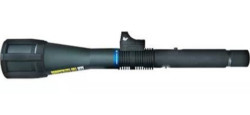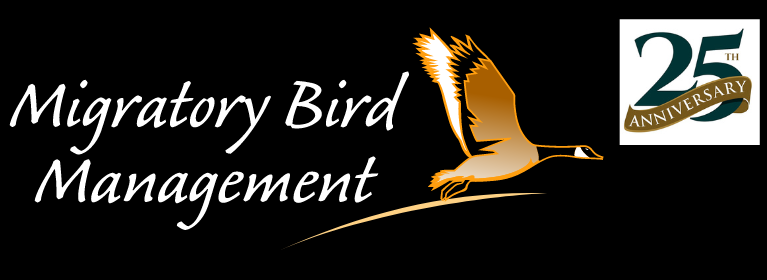Case Study Finds Hand Held Laser Minimizes Bird Strikes at Chicago Executive Airport
Aug 26, 2021
Introduction
Bird strikes are a perennial source of hazard at airports, particularly during periods of migration. Migratory Bird Management’s sister company, Wild Goose Chase (WGC), has been providing bird control services to the Chicago Executive Airport since 1998 as part of a multi-tactic effort to reduce the population of Canada geese and minimize the threat of wildlife strikes against airplanes.
While dogs have been the primary tool used to manage the goose populations, one of WGC’s other key tools for bird control has been the green bird laser. Lasers are safe, humane and effective on all species of birds with no direct harm to wildlife when used properly.
The Agrilaser Aerolaser is a high-powered handheld model designed with extra safety features specifically for airport use. It has been used at PDX in Portland, Ore. since 2011.

Key findings of this Case Study
- 7 bird species: primarily Canada geese, European starlings, Ring-billed gulls, herring gulls
- 2 seasonal migrations in May and August
- Deterrents used: hand-held Aerolaser and canine harassment
- 16 annual bird strikes in 2019; 17 bird strikes in 2020
- Laser most effective against geese congregating at dusk
- Least effective against gulls, starlings and geese in daylight
The Case Study: Airport Bird Control
Initial Planning
Airports have strict safety regulations. Laser use at Chicago Executive Airport was discussed during a meeting between WGC, airport management, and the Federal Aviation Administration (FAA). The discussion covered safety protocols, use, communication, and reporting for a one-year (spring and fall migration) trial use of the Aerolaser.
Spring 2020 Findings
Though the laser is rated for use in daylight conditions, stubborn spring birds like gulls, starlings, and geese were sometimes unaffected in daylight and dogs were used as a backup. The laser was effective in overcast conditions. Heavy use of the laser in May contributed to fewer birds in June.
Fall 2020 Findings
Fall flocking and migration begins for many species in August when starlings and Canada geese became a larger issue. Groups of geese would congregate near dusk and the laser proved to be invaluable for these later service times.
Laser Results: Airport Bird Management
Table 1: Bird Thresholds and Totals
| Target Species | Group Size Threshold | Total Chased |
|---|---|---|
| Canada Goose | Any | 2464 |
| European Starling | 20+ | 921 |
| Great Blue Heron | Any | 6 |
| Great Egret | Any | 19 |
| Ducks (all species) | Any | 62 |
| Raptors (all species) | Any | 2 |
| Ring-Billed/Herring Gull | Any | 179 |
Table 1 shows the target bird species as well as the threshold for number of birds before chasing and the total number of birds chased throughout the service year. The goal of this was to effectively remove as many birds as possible.
Strike Impacts
The following tables show strike data for the year prior to the laser study (2019), and the year of the study (2020).
Table 2: Total Bird Strikes by Year
| Year | Strikes |
|---|---|
| 2019 | 16 |
| 2020 | 17 |
Table 2 looks at total bird strikes for the year.
Table 3: Strikes During Service Period
| Year | Strikes |
|---|---|
| 2019 | 13 |
| 2020 | 8 |
Table 3 shows the number of bird strikes during the study period only (May 4th through June 30th, and August 1st through December 31st).
While this is too little data to reach hard conclusions, it suggests that use of the laser, and the chasing of additional species by Wild Goose Chase staff, reduced bird strikes overall.
Conclusion
Laser use enabled the WGC team to reduce bird strikes while increasing the scope of bird management. However, stubborn species or species that display seasonal territorial behavior may not find the laser threatening. Having the laser in an airfield’s bird management toolbox will complement the array of bird management tools and improve safety and efficacy of wildlife management.
The study results confirmed the value of the laser for airport safety and WGC was granted approval to continue its use at Chicago Executive Airport. The next step is to seek approval to train airfield staff on its use, then expand that to other airports around the country.
The Migratory Bird Management Team
The Migratory Bird Management team has deep expertise in the management of bird conflicts with biologist-led strategies customized to the location. Every species of bird and every setting poses unique challenges that must be taken into consideration for maximum effectiveness.
Get started with an assessment and learn more about the right solution for your bird conflicts.
To learn more about Migratory Bird Management’s services and strategies for solving your bird conflicts, give us a call or click on the link below.




 0
0
